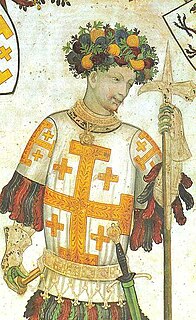Dodo of Cons (Dudo of Konz-Saarburg) (fl. 1096), lord of Cons-la-Grandville, a nobleman from the Lotharingian territories, son of Adelon (Adelo) de Cons. Dodo was originally from Konz, above Trier at the confluence of the Moselle and Sauer rivers. Dodo had taken the cross and joined in the First Crusade and was lucky enough to return unscathed along with his wife, a countess of Chiny.
Floruit, abbreviated fl., Latin for "he/she flourished", denotes a date or period during which a person was known to have been alive or active. In English, the word may also be used as a noun indicating the time when someone flourished.
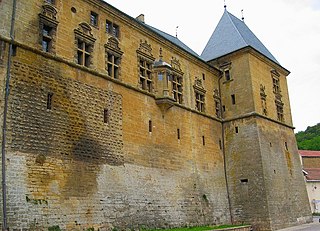
Cons-la-Grandville is a commune in the Meurthe-et-Moselle department in north-eastern France.

Lotharingia was a medieval successor kingdom of the Carolingian Empire, comprising the present-day Netherlands, Belgium, Luxembourg, North Rhine-Westphalia (Germany), Rhineland-Palatinate (Germany), Saarland (Germany), and Lorraine (France). It was named after King Lothair II who received this territory after the kingdom of Middle Francia of his father Lothair I was divided among his sons in 855.
Cons-la-Grandville was a commune of Meurthe-et-Moselle in what is now northeastern France on the river Chiers. Dodo was a benefactor of the abbey of Saint-Hubert to which he donated the priory of St Michael. His father, Adelo was master of the castle of Dun on the Meuse which had been given to the church of Verdun by Emperor Henry IV. On Adelo's death his lands were divided between his sons Walter, who received Dun, and Dodo who received Cons.
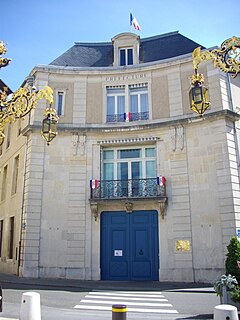
Meurthe-et-Moselle is a department in the Grand Est region of France, named after the Meurthe and Moselle rivers.

The Chiers is a river in Luxembourg, Belgium and France. It is a right tributary of the Meuse. Its total length is about 130 kilometres (81 mi).
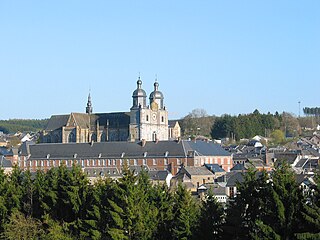
Saint-Hubert is a Walloon municipality of Belgium located in the province of Luxembourg. On 1 January 2007 the municipality, which covers 111.16 km², had 5,737 inhabitants, giving a population density of 51.6 inhabitants per square kilometre.
Dodo was a crusader who was one of the many leading knights from Walloon and the Lotharingian territories that joined the army of Godfrey of Bouillon in the First Crusade. These included Godfrey's brothers and their cousin Baldwin of Le Bourg, Baldwin II, Count of Hainaut, Rainald (or Reinhard), Count of Toul, Warner, Count of Grez, Baldwin of Stavelot, Peter of Stenay, and the brothers Henry and Godfrey of Esch. Dodo was known to have been at the siege of Nicaea in 1097.

Wallonia is a region of Belgium. As the southern portion of the country, Wallonia is primarily French-speaking, and accounts for 55% of Belgium's territory and a third of its population. The Walloon Region was not merged with the French Community of Belgium, which is the political entity responsible for matters related mainly to culture and education, because the French Community of Belgium encompasses both Wallonia and the majority French-Speaking Brussels-Capital Region. The German-speaking minority in eastern Wallonia results from WWI and the subsequent annexation of three cantons that were initially part of the former German empire. This community represents less than 1% of the Belgian population. It forms the German-speaking Community of Belgium, which has its own government and parliament for culture-related issues.
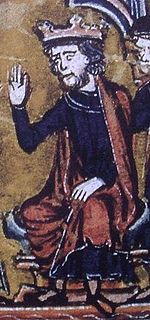
Baldwin II, also known as Baldwin of Bourcq or Bourg, was Count of Edessa from 1100 to 1118, and King of Jerusalem from 1118 until his death. He accompanied his cousins, Godfrey of Bouillon, and Baldwin of Boulogne, to the Holy Land during the First Crusade. He succeeded Baldwin of Boulogne as the second count of Edessa when his cousin left the county for Jerusalem. He was captured at the Battle of Harran in 1104. He was held first by Sökmen of Mardin, then by Jikirmish of Mosul, and finally by Jawali Saqawa. During his captivity, Tancred, the Crusader ruler of the Principality of Antioch, and Tancred's cousin, Richard of Salerno, governed Edessa as Baldwin's regents.
Baldwin II of Mons (1056–1098?) was count of Hainaut from 1071 to his death. He was the younger son of Baldwin VI, Count of Flanders and Richilde, Countess of Mons and Hainaut.
Dodo married Hadvide of Chiny, daughter of Arnold I, Count of Chiny. Murray [1] identifies her as "Hadwida, daughter of Arnulf II of Chiny" but such different spellings are common in historical documents. The confusion about the numbering is rampant among the counts of Chiny and Looz, especially once the countships merged.
Arnold I, Count of Chiny, son of Louis II, Count of Chiny, and his wife Sophie. He succeeded his father as count before 1066.
The Counts of Chiny were part of the nobility of Lotharingia that ruled from the 9th to the 14th century in what is now part of Belgium. The County of Chiny was created in the early 10th century out of the ancient county of Ivois. The county now forms part of the province of Luxembourg in present-day Belgium. The county of Chiny included the present-day cantons of Virton, Etalle, Florenville, Neufchâteau, Montmédy and Carignan, as well as the castles of Warcq on the Meuse, which was built in 971 by Otto, ancestor of the later Counts of Chiny. There is a close relationship between the Counts of Chiny and the Counts of Looz, the Counts of Verdun and the Bishops of Verdun.
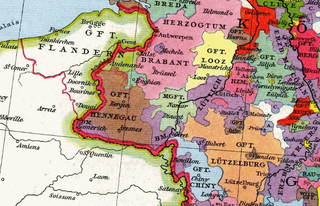
The County of Loon was a province of the ancien regime Holy Roman Empire, which by 1190 came under the overlordship of the Prince-bishop of Liège. It lay north of Liège and west of the Maas river in present-day Flemish-speaking Belgium. Loon's first definite count was brother to a bishop of Liège, and over generations the county grew and then came under direct control of the bishops, as their largest Dutch-speaking secular lordship. Once it reached its maximum extent its territory corresponded closely to that of the current Belgian province of Limburg.
Even before that, Arnold I and Arnold II, who were counts of Looz before the merger with the counts of Chiny, were often confused with each other. Dodo and Hadvide are not known to have had any children, although a son named Quino has been attributed to Dodo. [2]
Arnold I, Count of Looz (Loon), son of Emmo, Count of Loon, and Suanhildis, daughter of Dirk III, Count of Holland, and his wife Othelandis.
Arnold II, Count of Looz, son of Arnold I, Count of Looz, and Agnes von Mainz, daughter of Gerhard I, Count of Rieneck, and Helwig von Bliescastel. He is distinguished from his father of the same name by historians who note records for counts named Arnold or Arnulf between 1179 and 1141. The first Arnold must have died between 1125 when Count Arnold appears in a record with his son also named Arnold, and 1135, when a new Count Arnold appears with his own son and successor Louis.
Hadvide accompanied her husband on the First Crusade. It is unclear what her role was during the crusade, but she did procure a complete set of vestments in black cloth and gold trim, and a chalice made of gold and adorned with jewels. [3] These were donated to the monks of St. Hubert-en-Ardenne, named in honor of Hubert, Bishop of Liege, patron of archers, dogs, mathematicians and metal workers. Many of the original places of worship still exist at St. Hubert. The relic Clef de Saint-Hubert , which dates to the twelfth century, may include elements of this chalice. The vestments are not known to have survived.

Saint Hubertus or Hubert became Bishop of Liège in 708 AD. He is a Christian saint who is the patron saint of hunters, mathematicians, opticians, and metalworkers. Known as the Apostle of the Ardennes, he was called upon, until the early 20th century, to cure rabies through the use of the traditional St Hubert's Key.
